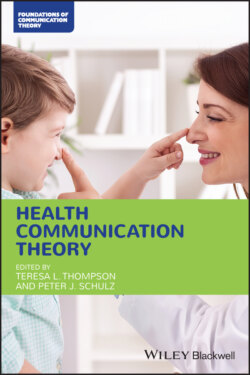Читать книгу Health Communication Theory - Группа авторов - Страница 44
Analytic Autoethnography
ОглавлениеThe term analytic autoethnography refers to ethnographic research in which the researcher combines self‐narrative with dialogic engagement and is committed to developing theoretical understandings of broader social phenomena (Anderson 2006). The latter is what especially defines and distinguishes analytic autoethnography from Ellis and Bochner’s evocative autoethnography. Indeed, “the definitive feature of analytic autoethnography is this value‐added quality of not only truthfully rendering the social world under investigation but also transcending that world through broader generalization” (Anderson 2006, p. 388). This is a more conservative position that incorporates the researcher’s perspective within traditional elements of scholarly inquiry, leading some critics to claim analytic autoethnography is really no different than realist ethnography (see Ellis and Bochner 2006).
Anderson (2006) outlined five key features characterizing analytic autoethnography. First, the researcher is a complete member of the studied social world. Second, as a complete member conducting research, the researcher is also aware of her reciprocal influence on the social world under study (i.e. analytic reflexivity) and, third, is visible in the narrative representation of her work to demonstrate her personal engagement in that world. Fourth, the researcher grounds her autoethnography in her subjective experience but reaches beyond it as well in dialogue with other participants. Finally, to that end, the researcher is committed to analysis directed toward theoretical elaboration, refinement, and extension that transcends beyond the local data for broader understandings of social processes.
To illustrate, consider Laura Ellingson’s (2005) innovative ethnography of an interdisciplinary geriatric oncology team at a regional cancer center. A cancer survivor herself, she combined autoethnography with narrative ethnography, grounded theory, and feminist analyses to theorize backstage communication processes (e.g. formal reporting, informal information sharing, and relationship building) for improved frontstage patient care. While her layered account shared many of the characteristics of analytic autoethnography, Ellingson also embraced crystallization, embodied ways of knowing, and her talents as a narrative writer to evoke emotional responses that traditional analysis and representation usually eschew.
Like Ellingson (2009; Ellingson and Ellis 2008), some scholars call for a moderate approach to autoethnography that is both self‐focused and analytical:
What I wish to do in this article is draw attention to the middle ground, to encourage would‐be autoethnographers to consider a balanced perspective that lies between the warring factions of evocative and analytic approaches to this method, one that captures the meanings and events of one life in an ethical way but also in a way that moves collective thinking forward – a moderate autoethnography.
(Wall 2016, p. 7)
Erin Willer’s (2020) compelling autoethnography of running as an embodied practice under the load of infertility, baby loss, and motherhood provides an apt example. Willer drew from her detailed running log, which consisted of “the successes and challenges of my runs themselves, but also my memories, experiences, and sense‐making surrounding my infertility, losses, motherhood, and transitioning into being 40 years old that running conjures up” (Willer 2020, p. 3), to explore meanings born from this running‐in‐process state and to expose the sociocultural challenges that women similarly experience. Willer writes with striking sensory detail, literary artfulness, and soulful heart (i.e. evocative) while also theorizing feminist embodiments of health and unsteady spaces of freedom (i.e. analytic). In other studies, autoethnographers in health communication have combined singular personal stories with theoretical understandings of – for example – disenfranchised grief when an ex‐spouse dies (Tullis 2017), feminist perspectives on patient consent during illness (Cole 2020), revealing and concealing invisible illness (Defenbaugh 2013), and the moral process of bearing witness to suffering in the intensive care unit (Sharf 2019). Moderate autoethnographies like these “tap into legitimate and unique sources of knowledge and insight that come from a particular view of one’s place in the world” in evocative tellings that are supported by theory and connected to relevant literature (Wall 2016, p. 7).
